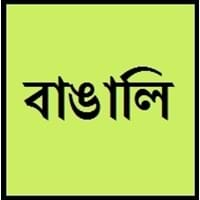Countries
Andaman and Nicobar Islands, Bangladesh, India, Sierra Leone
India
National Language
Bangladesh, India
Bangladesh, Bhutan, India, Nepal
Second Language
India
Not spoken in any of the countries
Speaking Continents
Asia
Asia
Minority Language
Australia, Canada, Italy, Japan, Kuwait, Malaysia, Maldives, Nepal, Oman, Pakistan, Qatar, Saudi Arabia, Singapore, South Africa, South Korea, United Arab Emirates, United Kingdom, United States of America
Not spoken in any of the countries
Regulated By
Bangla Academy, Paschimbanga Bangla Akademi
Not Available
Interesting Facts
- Bengali language is the World's sweetest language.
- 21st February is celebrated as an International Mother Language day, which is based on Bengali language.
- Santali language was an oral language till nineteenth century.
- Before the invention of Santali alphabets, Santali was written with the Bengali or Odia alphabets.
Similar To
Assamese and Oriya
Munda Language
Derived From
Sanskrit Language
Not Available
Alphabets in
Bengali-Alphabets.jpg#200
Santali-Alphabets.jpg#200
Scripts
Bengali, Brahmic family and derivatives
Bengali, Devanagari, Latin, Ol Chiki, Oriya
Writing Direction
Left-To-Right, Horizontal
Left-To-Right, Horizontal
Language Levels
Not Available
Time Taken to Learn
Not Available
Hello
হ্যালো (Hyālō)
Henda ho
Thank You
ধন্যবাদ (dhonnobad)
Adi Johar
How Are You?
কেমন আছিস? (kêmon achhish?)
Cet’leka menama?
Good Night
শুভরাত্রি (shubhoratri)
Boge Ninda
Good Evening
শুভ সন্ধ্যা। (shubho shondha)
Boge Ayup’
Good Afternoon
ভাল বৈকাল (Bhāla Baikāla)
Not Available
Good Morning
সুপ্রভাত (shuprobhat)
Boge Setak’
Please
অনুগ্রহ করে (Anugraha karē)
Not Available
Sorry
দুঃখিত (dukkhito)
Not Available
Bye
বিদায় (Bidāẏa)
Not Available
I Love You
আমি আপনাকে ভালোবাসি (ami apnake bhalobashi)
Not Available
Excuse Me
মাফ করবেন (Māpha karabēna)
Not Available
Where They Speak
Bangladesh, Burma, India
India
How Many People Speak
Not Available
Dialect 2
Hajong
Not present
Where They Speak
Bangladesh, India
Not Available
How Many People Speak
Not Available
Dialect 3
Rarhi
Not present
Where They Speak
India
Not Available
Speaking Population
Not Available
Second Language Speakers
Not Available
Native Name
বাংলা (baɛṅlā)
संथाली (sãtʰālī)
Alternative Names
Bangala, Bangla, Bangla-Bhasa
Har, Hor, Samtali, Sandal, Sangtal, Santal, Santhali, Santhiali, Satar, Sentali, Sonthal
French Name
bengali
santal
German Name
Bengali
Santali
Pronunciation
Not available
Not Available
Ethnicity
Bengalis (Bengali people)
Santal and Teraibasi Santali
Origin
1000–1200 CE
20th century
Language Family
Indo-European Family
Austroasiatic Family
Subgroup
Indo-Iranian
Not Available
Branch
Indic
Not Available
Early Forms
Abahatta, Old Bengali
No early forms
Standard Forms
Bengali
Santali
Language Position
Not Available
Signed Forms
Not Available
Not Available
Scope
Individual
Individual
ISO 639 1
bn
No data available
ISO 639 6
Not Available
Not Available
Glottocode
beng1280
sant1410
Linguasphere
59-AAF-u
No data available
Language Type
Living
Living
Language Linguistic Typology
Not Available
Subject-Object-Verb
Language Morphological Typology
Not Available
Not Available
Bengali and Santali Greetings
People around the world use different languages to interact with each other. Even if we cannot communicate fluently in any language, it will always be beneficial to know about some of the common greetings or phrases from that language. This is where Bengali and Santali greetings helps you to understand basic phrases in Bengali and Santali language. Bengali word for "Hello" is হ্যালো (Hyālō) or Santali word for "Thank You" is Adi Johar. Find more of such common Bengali Greetings and Santali Greetings. These greetings will help you to be more confident when conversing with natives that speak these languages.
Bengali vs Santali Difficulty
The Bengali vs Santali difficulty level basically depends on the number of Bengali Alphabets and Santali Alphabets. Also the number of vowels and consonants in the language plays an important role in deciding the difficulty level of that language. The important points to be considered when we compare Bengali and Santali are the origin, speaking countries, language family, different greetings, speaking population of these languages. Want to know in Bengali and Santali, which language is harder to learn? Time required to learn Bengali is 44 weeks while to learn Santali time required is Not Available.





